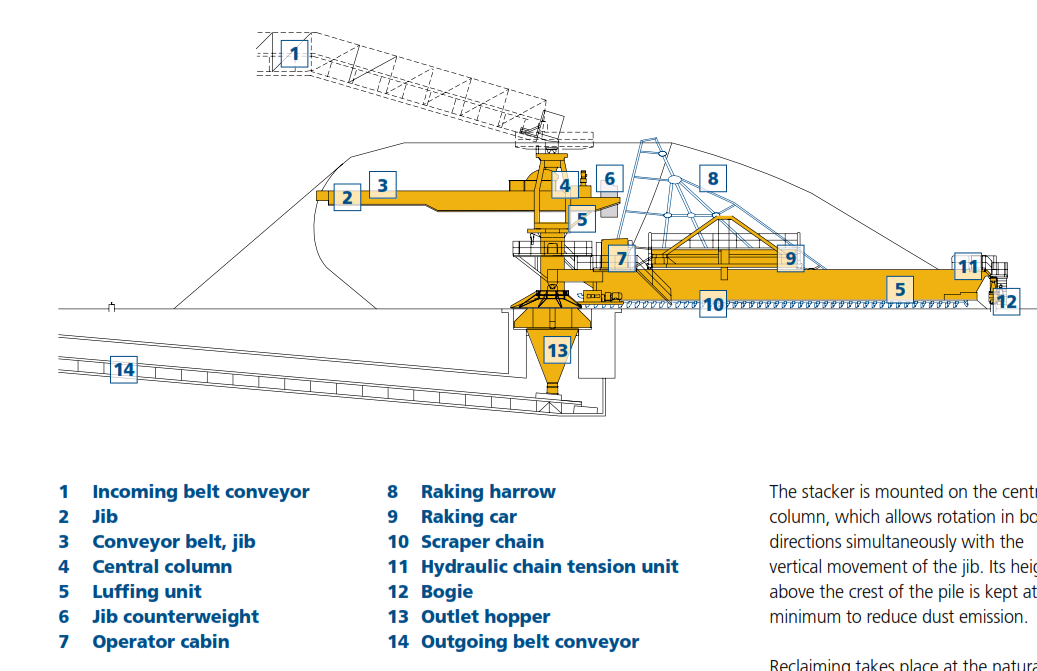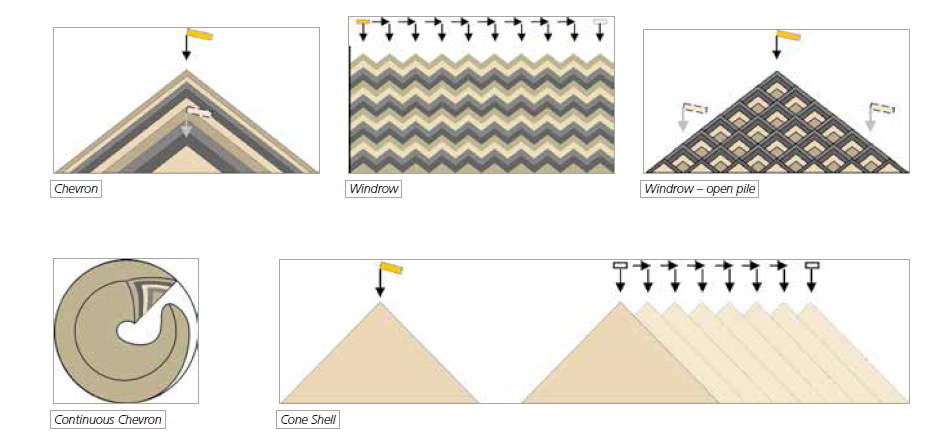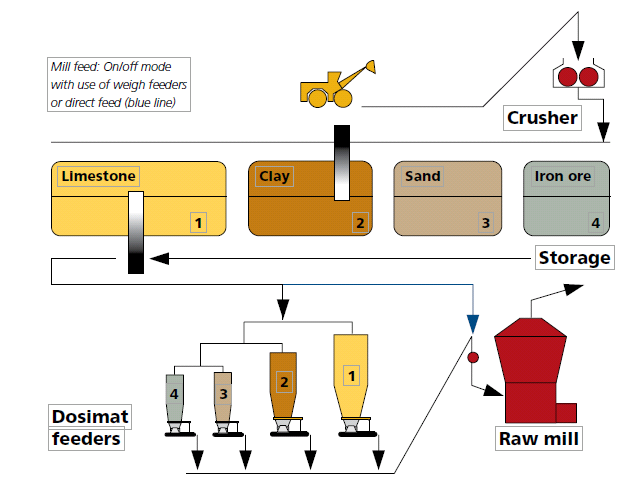Contents
Stacker and reclaimer systems for cement plants
ATTENTION , THE MOST 17 BOOKS IN CEMENT INDUSTRY KINDLY CLICK HERE NOW TO DOWNLOAD THEM, ANYONE WORK IN CEMENT INDUSTRY SHOULD OWN AND STUDY ALL THE 17 BOOKS

Selection criteria
When planning which stacker and reclaimer system to use, you will need to consider various questions before selecting type and size:
– Homogenising effect required
– Future uprating of the store
– Open or roofed store
– Mill feed system
– Chemical characteristics of the materials to be handled
Prehomogenisation
Prehomogenisation Prehomogenisation is often necessary in the cement industry, in cases where the raw material chemical composition varies greatly.Prehomogenisation is used primarily for the main components in cement production, i.e. limestone and clay. With the increasing variation in the grades of coal used for coal firing installations, there is a growing need for prehomogenisation and storage of coal. Depending on the properties of the coal used, a prehomogenising or buffer store is used.
Stacking methods
Stacking methods
Longitudinal stores: The most commonly used stacking methods are Chevron, Windrow and Cone Shell. Basically these methods consist of stack-ing a large number of layers on top of each other in the longitudinal direction of the pile. According to the Chevron method material is deposited by the stacker moving to and fro over the centre line of the pile. The Chevron stacking method causes segregation of the material with fine particles in the central part of the pile and coarse particles on the surface and at the bottom of the pile. To ensure proper blending a Chevron pile must therefore be reclaimed from the face of the pile, working across the entire cross section. According to the Windrow method material is deposited from a number of positions across the full width of the pile. The Windrow method prevents segregation and ensures more even distribution of fine and coarse particles across the pile. The Windrow method is preferred in cases where the reclaimer is only operat-ing in one part of the pile cross section at a time or in cases where segregation would make an open pile base unacceptable – typically in coal stores.
The Cone Shell method is often used in cases where homogenisation is not nec-essary. The pile is formed by depositing material in a single cone from a fixed position. When this conical pile is full, the depositing of material moves to a new position and a new cone is formed against the shell of the first one. This process continues in the longitudinal direction of the store until the stockpile is complete.
Circular stores: Continuous Chevron stacking is the most commonly used method. The circular store has a round base with aring-shaped pile being continuously stacked at one end and reclaimed at the other. Stacking takes


Thanks again for your support in this position